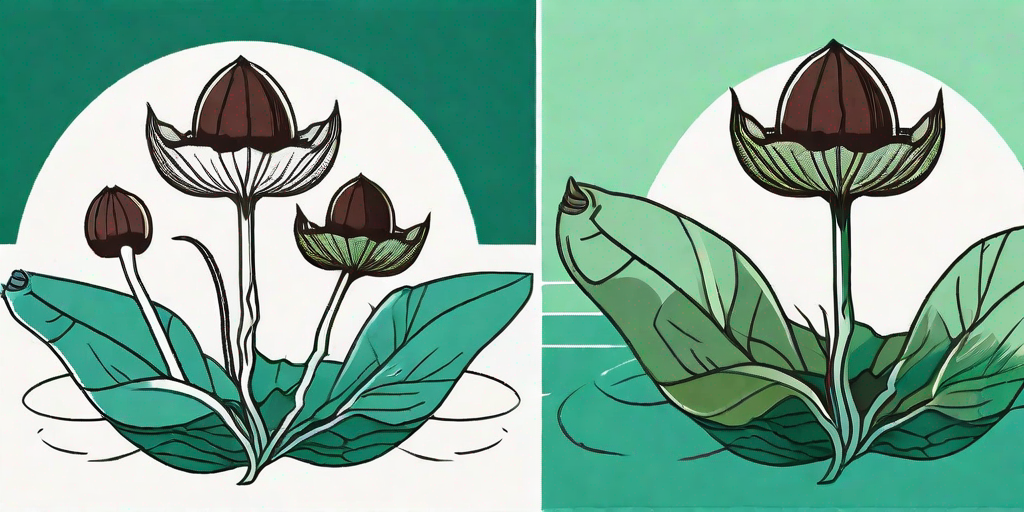
Water chestnuts, or Eleocharis dulcis as they are known in the botanical world, are a fascinating species. These aquatic plants, native to Asia, Australia, and Africa, are not only a culinary delight but also a marvel of nature. They thrive in muddy, marshy environments and transform into crunchy, sweet treats that have found their way into various cuisines worldwide. But how do these muddy roots become the crunchy delights we know and love? Let's dive into the fascinating journey of water chestnuts' growth.
The Life Cycle of a Water Chestnut
Water chestnuts begin their life as tiny seeds, nestled in the muddy floor of a pond or marsh. These seeds, known as corms, are the starting point of a journey that will see them transform into the water chestnuts we know and love.
After the corms have been planted, they begin to sprout shoots. These shoots grow upwards, reaching for the surface of the water. Once they break through the surface, they unfurl into beautiful, leafy plants. These plants float on the surface of the water, their roots reaching down into the mud below.
From Corm to Chestnut
Once the water chestnut plant has established itself, it begins to produce more corms. These corms grow from the base of the plant, nestled in the mud. Over time, these corms grow and harden, transforming into the water chestnuts we are familiar with.
The process from corm to chestnut takes several months. During this time, the plant continues to grow and produce more corms. Once the corms have matured into chestnuts, they are ready to be harvested.
Harvesting Water Chestnuts
Harvesting water chestnuts is a labor-intensive process. The chestnuts are buried in the mud, so they must be dug up by hand. This is often done by wading into the water and feeling around in the mud for the hard, round chestnuts.
Once the chestnuts have been harvested, they are cleaned and prepared for consumption. This involves peeling off the tough outer skin to reveal the crunchy, sweet flesh inside.
The Joy of Harvesting
Despite the hard work involved, harvesting water chestnuts can be a rewarding experience. There's something satisfying about digging in the mud and finding a treasure trove of delicious chestnuts. Plus, the end result is a tasty treat that's worth the effort!
So next time you're enjoying a dish with water chestnuts, spare a thought for the hard work that went into harvesting them. And maybe, just maybe, you'll appreciate their crunchy goodness even more.
Water Chestnuts in Cuisine
Water chestnuts are a versatile ingredient that can be used in a variety of dishes. They have a sweet, nutty flavor and a crunchy texture that adds a delightful contrast to many recipes.
They are a staple in Asian cuisine, often used in stir-fries, soups, and dumplings. They can also be eaten raw, used in salads, or even made into a refreshing juice.
Some Delightful Recipes
Here are a few recipes that showcase the versatility of water chestnuts:
- Stir-fried chicken with water chestnuts and bell peppers
- Water chestnut and pork dumplings
- Water chestnut salad with citrus dressing
- Water chestnut juice with honey and lemon
These recipes highlight the unique texture and flavor of water chestnuts, making them a star ingredient in any dish.
FAQs about Water Chestnuts
Are water chestnuts a type of nut?
No, despite their name, water chestnuts are not a type of nut. They are actually a type of aquatic vegetable. The name "chestnut" comes from their hard, round appearance, which is similar to that of a chestnut.
Can you eat water chestnuts raw?
Yes, water chestnuts can be eaten raw. They have a sweet, slightly nutty flavor and a crunchy texture that makes them a great addition to salads.
How do you store water chestnuts?
Water chestnuts should be stored in a cool, dry place. If they are peeled, they should be kept in water in the refrigerator to prevent them from drying out.
Can you grow water chestnuts at home?
Yes, it is possible to grow water chestnuts at home, provided you have the right conditions. They require a warm climate and a pond or marshy area where they can grow.
So there you have it - the fascinating journey of water chestnuts, from muddy roots to crunchy delights. Whether you're a fan of their unique texture, their sweet flavor, or the joy of digging them up yourself, there's no denying that water chestnuts are a marvel of nature. So next time you crunch into one, take a moment to appreciate the journey it's been on. You might just find it tastes even better!











